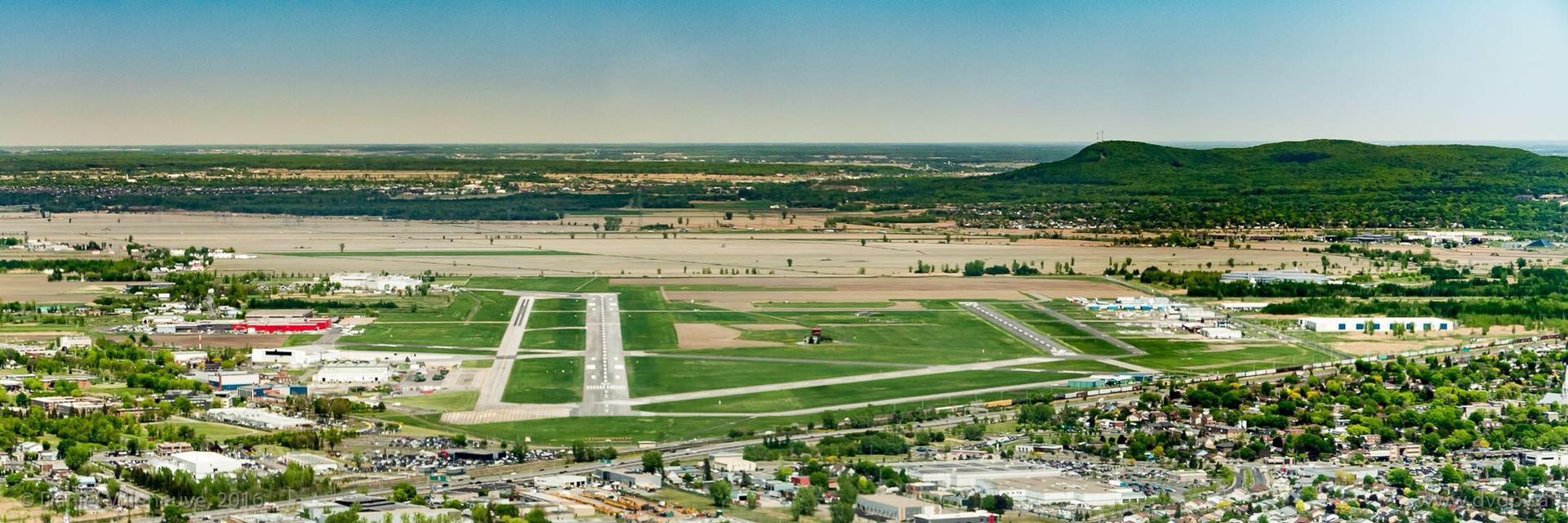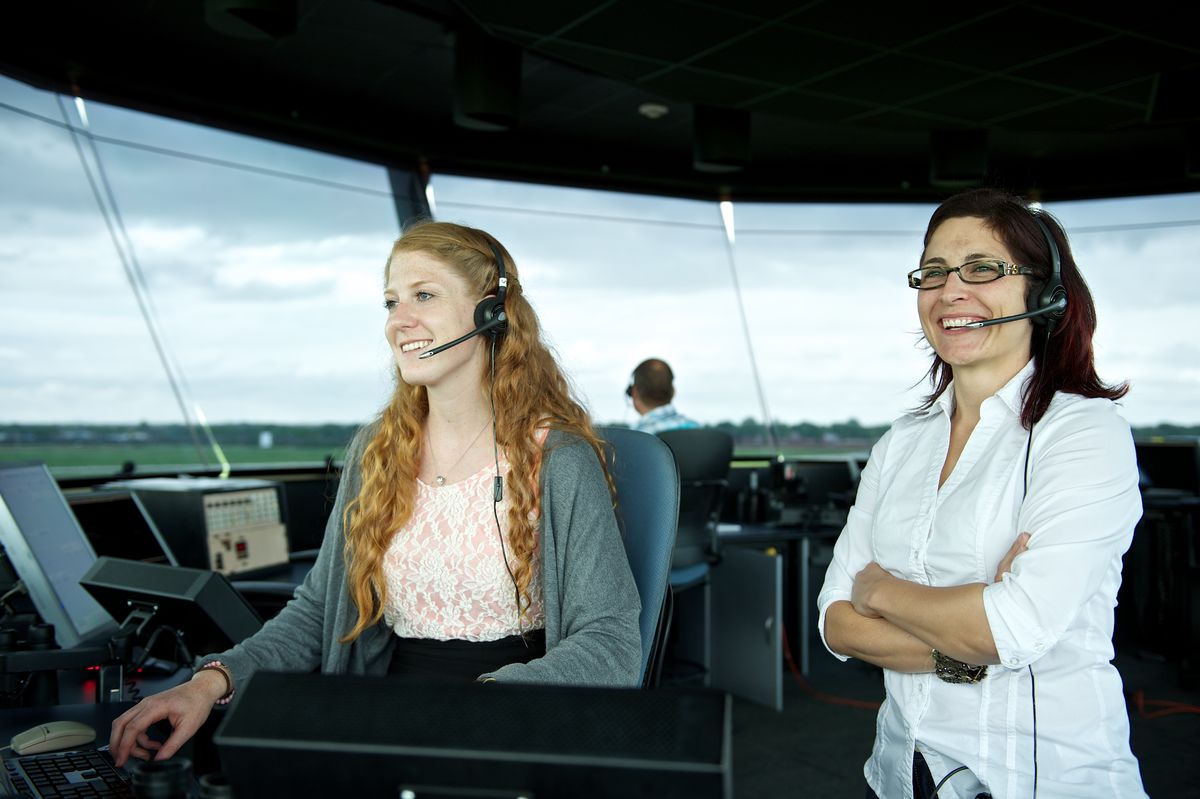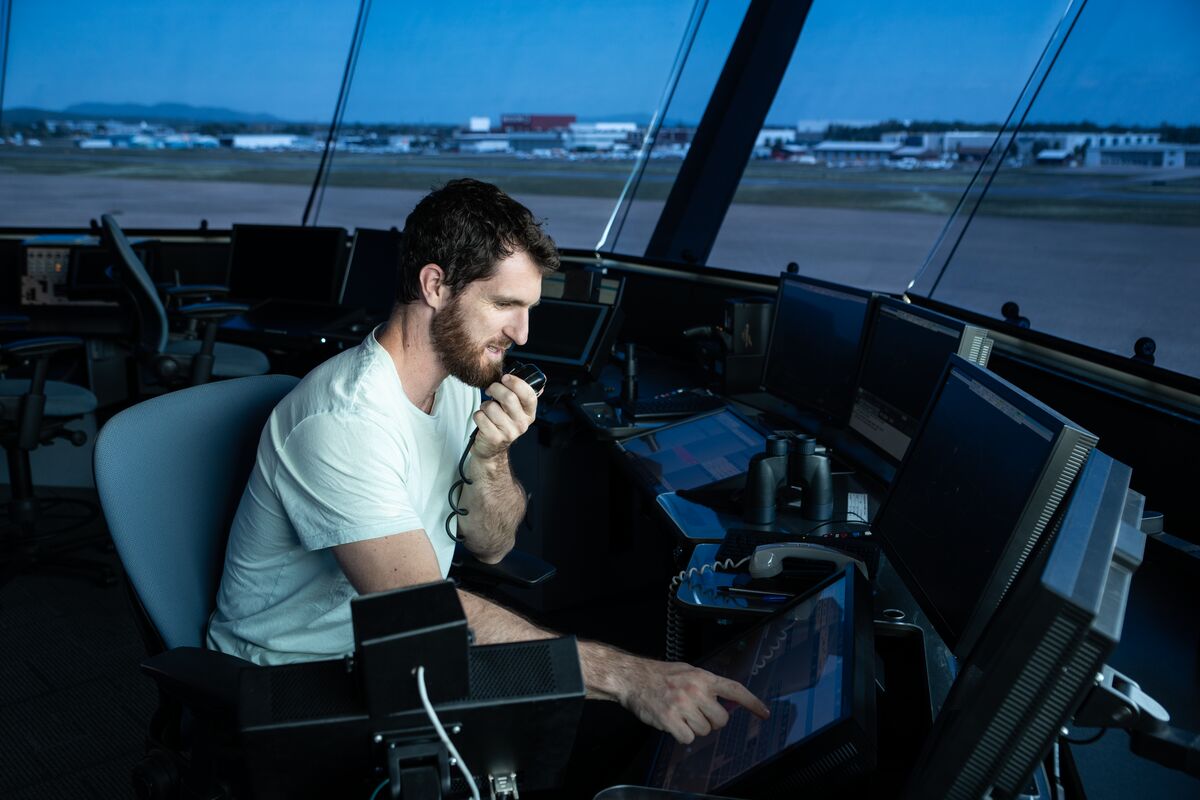







April 12, 2024
In the heart of Saint-Hubert, Quebec, stands a testament to Canada's commitment to aviation safety and innovation: the nation's first air traffic control tower. Once home to an airship mooring towerOpen a new window and a Royal Canadian Air Force StationOpen a new window, Canada’s history of air traffic control (ATC) began with the creation of the Department of TransportOpen a new window in 1936 and the system was formally inaugurated with the commissioning of the Saint-Hubert control tower in 1939. As we mark the tower’s 85th anniversary, we celebrate the pivotal role this iconic structure has played in shaping the skies above us.
Back in 1939, Gone With the Wind and The Wizard of Oz were making waves at the box office, Judy Garland, Bing Crosby, and Glenn Miller were at the top of the music charts, and aviation was in its infancy. The opening of Canada's first air traffic control tower marked a significant milestone in the country's aviation history. Situated at the Saint-Hubert Airport, just outside of Montreal, this pioneering tower symbolized Canada's dedication to ensuring safe and efficient air travel for all.
From humble beginnings, the Saint-Hubert Tower has grown and evolved alongside the aviation industry. What started as a simple structure with basic communication tools has transformed into a state-of-the-art facility equipped with cutting-edge technology and a team of highly skilled air traffic controllers.
When the control tower first opened, its total complement of equipment consisted of a few radios and light projectors. Today, air traffic controllers use highly sophisticated radar, space-based ADS-BOpen a new window, and radio communication equipment to safely guide aircraft to their destination.
“It’s amazing to think that air traffic control in Canada started right here in Saint-Hubert,” says Ian Michon, a NAV CANADA Air Traffic Controller who began his career working at the Saint-Hubert tower in 2011. “We’re located in the middle of three runways, making this one of the most unique towers in our country. This airport also has a long history of training the next generation of aviation industry professionals. From Canada’s first air traffic controllers, to RCAF pilots, to general aviation pilots, this airport has evolved many times to meet Canada’s current and future needs.”

But beyond its technical capabilities, the Saint-Hubert Air Traffic Control Tower holds a special place in the hearts of many Canadians. It serves as a symbol of our nation's rich aviation heritage and a tribute to the dedicated professionals who keep our skies safe.
"As we commemorate the 85th anniversary of Canada's first air traffic control tower, we are reminded of the pivotal role air traffic control plays in safeguarding our skies,” says Nick von Schoenberg, President of the Canadian Air Traffic Control Association and 27-year Air Traffic Controller. “A lot has changed since the erection of that first tower, and a lot hasn’t: Air traffic controllers remain the most vital and indispensable component within it."
Today, NAV CANADAOpen a new window tower controllers provide pilots clearances and instructions to maintain separation from other aircraft during takeoff and landing. They have a direct view of the airport, aircraft and use radios to communicate with flight crews. Their job is to maintain a safe and orderly flow of air traffic within a defined airspace surrounding the airport, referred to as a “control zone,” as well as on the ground on runways and taxiways. Currently, there are 42 airport control towersOpen a new window across the country.

One of the key aspects of the Saint-Hubert Air Traffic Control Tower's legacy is its contribution to training the next generation of air traffic controllers. Over the years, the tower has served as a training ground for aspiring controllers, providing them with hands-on experience and invaluable mentorship from seasoned professionals. This has played a crucial role in shaping the careers of countless air traffic controllers, ensuring that Canada's airspace remains in safe hands for years to come.
As we commemorate the 85th anniversary of Canada's first air traffic control tower, we reflect on the remarkable progress we've made in the field of aviation. From the first pioneering days of flight to the modern era of jet travel, the Saint-Hubert Tower has stood as a beacon of safety and reliability, guiding aircraft to their destinations.
But our celebration goes beyond just looking back. It's also about looking forward to the future of aviationOpen a new window and the continued advancements that lie ahead. As technology continues to evolve and more aircraft take to our skies, the importance of air navigation service professionals cannot be overstated.

In the years to come, the Saint-Hubert Air Traffic Control Tower will continue to play a vital role in shaping the future of aviation in Canada. With its unwavering dedication to safety and efficiency, it will remain a cornerstone of our nation's aviation infrastructure.
“Here's to 85 years of safe skies and countless milestones yet to come,” says Ray Bohn, President and CEO of NAV CANADA. “Happy anniversary to all the air traffic service professionals who have worked at Canada’s first air traffic control tower.”
NAV CANADA is hiring air traffic service professionals, including air traffic controllers and flight service specialists across Canada. Visit our careers page to learn more.